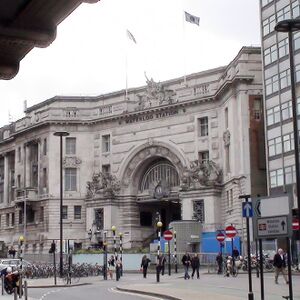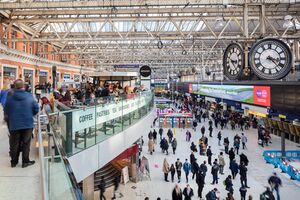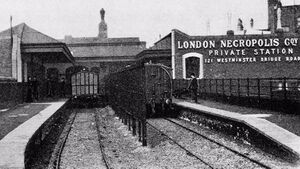Waterloo
| Waterloo | |||||
|---|---|---|---|---|---|
| Japanese Name | ウォータールー | ||||
| Weapon | |||||
| Race | Human | ||||
| Nationality | |||||
| Birthday | July 11 | ||||
| Constellation | Cancer | ||||
| Talents | Tying people and things up | ||||
| Likes | Big, huggable pillows | ||||
| Dislikes | Being left all alone | ||||
| Strengths | Full of energy and always smiling | ||||
| Weaknesses | Can't sympathize with others | ||||
| Hobbies | Walking around lively places | ||||
I'm Waterloo! I just love you, Big Bro!♪ Say, where are you taking me today? You won't sneak out on your own, right? You better bring ol' Loo with ya if you go somewhere, okay?
Layers
| Icon | Title | Release Date | Where to Obtain |
|---|---|---|---|
| [The Young Gravekeeper] Waterloo | 2022 May 24 (EN) | [Altar of Judgement - Dark Knight] Event Reward | |
| [Always Together] Waterloo | 2022 August 23 | [Caught Like Butterflies & Flowers] Limited Gacha | |
| [The Loneliness Found Within a Pillow] Waterloo | 2022 May 24 (EN) | [Magical Girls Sign!] Limited Gacha |
Skills
Trivia
- Waterloo's birthday is the opening date of Waterloo Bridge Station in 1848.
- Waterloo's gravekeeper theme is a reference to the London Necropolis & National Mausoleum Company opened from 1854 to 1927.
- The design of Waterloo's staff in [The Loneliness Found Within a Pillow] directly references the four-sided large clock hanging from the main concourse of Waterloo Station.
- Austerlitz and Waterloo contrasts each other - Battle of Austerlitz is Emperor Napoleon's greatest achievement and Battle of Waterloo is his ultimate defeat.
Counterpart
Waterloo station, also known as London Waterloo, is a central London terminus on the National Rail network in the United Kingdom, in the Waterloo area of the London Borough of Lambeth. It is connected to a London Underground station of the same name and is adjacent to Waterloo East station on the South Eastern Main Line. The station is the terminus of the South West Main Line to Weymouth via Southampton, the West of England main line to Exeter via Salisbury, the Portsmouth Direct line to Portsmouth Harbour which connects with ferry services to the Isle of Wight, and several commuter services around west and south-west London, Surrey, Hampshire and Berkshire.
Waterloo was built by the London and South Western Railway (L&SWR), designed by William Tite and opened on 11 July 1848 as "Waterloo Bridge Station". The major transport interchange at Waterloo comprises London Waterloo, Waterloo East, Waterloo Underground station, and several bus stops. There are more than 130 automated ticket gates on the station concourse, along with another 27 in the subway below.
The new station was opened in stages. It was partially ready in 1909, with the main booking hall opening on 11 June 1911. A vehicular roadway to the station opened on 18 December 1911. The connection to Waterloo Junction was removed in March that year, but a siding remained until 3 May 1925. The bridge remained in place and was used as a walkway between the two stations. Construction of the main station continued sporadically throughout World War I, and the new station finally opened in 1922, with 21 platforms and a 700-foot (210 m) long concourse. The roof and platforms were initially designed by J. W. Jacomb-Hood, who travelled to the US to look at station designs for inspiration. Following Jacomb-Hood's death in 1914, work was taken over by Alfred Weeks Szlumper. It was built in an Imperial Baroque style out of Portland stone. James Robb Scott designed the office range.
A four-faced clock hangs in the middle of the main concourse. Each panel has a diameter of 5 feet 6 inches (1.68 m). It was erected as part of the early 20th century rebuilding and designed by Gents' of Leicester. In 2010, the clock was fitted with technology to automatically switch to and from British Summer Time. Meeting "under the clock at Waterloo" is a traditional rendezvous.
Waterloo is one of the busiest railway stations in the UK, and has had nearly a hundred million entries and exits from the station in a year. It is also the country's largest station in terms of floor space and has the greatest number of platforms. Wikipedia
The London Necropolis Railway was a railway line opened in November 1854 by the London Necropolis Company (LNC), to carry corpses and mourners between London and the LNC's newly opened Brookwood Cemetery 23 miles (37 km) southwest of London in Brookwood, Surrey. At the time the largest cemetery in the world, Brookwood Cemetery was designed to be large enough to accommodate all the deaths in London for centuries to come, and the LNC hoped to gain a monopoly on London's burial industry. The cemetery had intentionally been built far enough from London so as never to be affected by urban growth and was dependent on the recently invented railway to connect it to the city.
On the night of 16–17 April 1941, the London terminus was badly damaged in an air raid and rendered unusable. Although the LNC continued to operate occasional funeral services from Waterloo station to Brookwood railway station immediately north of the cemetery, the London Necropolis Railway was never used again. Soon after the end of the Second World War the surviving parts of the London station were sold as office space, and the rail tracks in the cemetery were removed. The part of the London building which housed the LNC's offices survives today. The two stations in the cemetery remained open as refreshment kiosks for some years afterwards but were subsequently demolished. The site of the northern station, serving the Nonconformist cemetery, is now heavily overgrown. The site of the southern, Anglican, station is now the location of a Russian Orthodox monastery and a shrine to King Edward the Martyr, which incorporate the surviving station platform and the former station chapels.
Although it was never as successful as planned, the LNC was very influential in both the funeral industry and in the development of the area around Woking, and Brookwood Cemetery remains the largest cemetery in the United Kingdom. Wikipedia
Map
Gallery
- Pages using Tabber parser tag
- Pages using DynamicPageList3 parser tag
- Weapon Staff
- Human
- St. Iris
- Cancer
- Element Blow
- Element Dark
- Element Water
- Train Knights
- England












